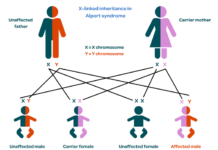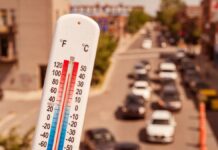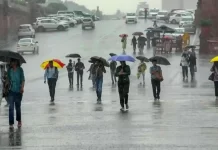India’s economy and workforce, the general public’s health, and its electrical networks are all at risk due to the rising frequency of heatwaves. Plans for combating the effects of rising temperatures must be effective.
An international team of scientists stated in a research that the April heat wave this year in South and Southeast Asia had a negative impact on weak and underprivileged people. It brought attention to the issues brought on by the heat wave, including an increase in heat stroke hospitalizations as well as forest fires and school closings.
The India Meteorological Department (IMD) declared February 2023 to be the warmest February since 1901 earlier in the year.
Following an unprecedented heat wave in South Asia in 2022, a research by World Weather Attribution examined the effects of climate change on the Indian heat wave and discovered that human-induced actions have increased the likelihood of extreme heat episodes in the area by 30 times.
According to Vishwas Chital, Senior Programmed Lead at the Council on Energy, Environment and Water (CEEW), “as the climate crisis accelerates, the adoption and implementation of Heat Action Plans (HAPs) are becoming an urgent necessity in India to effectively address the impacts of heat waves.”
Depending on the location, several definitions of a heat wave apply. According to the IMD, a heat wave occurs when maximum temperatures in coastal areas reach 37°C or higher, whereas in the plains, it occurs when maximum temperatures reach up to 40°C or more. The threshold is established at 30°C or higher in mountainous areas. In India, heat wave conditions are frequently felt from March through July, with intense heat waves predominating from April to June.
The plains of northwest India, the central and eastern regions, as well as the northern portion of Peninsular India, are the main areas affected by heat waves. Even in areas of India that have never before witnessed heat waves, such Himachal Pradesh and Kerala, high temperatures have been rising in recent years. There were 23 states hit by heat waves in 2019, up from 19 in 2018. Already, extreme heat episodes pose a serious threat to the health of vulnerable populations in India and other countries.
In order to lessen the effects of heat waves and save lives, it is essential to have well-designed and efficient heat action plans. Together, these actions support people’s overall safety and resilience while ensuring their well-being during heat waves, according to Chital.
During periods of excessive heat, HAPs are essential for preserving communities and preserving lives. Authorities in India are working more to put extreme heat warning systems and preparedness plans into place, drawing inspiration from Ahmedabad’s trailblazing HAP from 2013.
What is the impact of rising heat in India
The poor would likely suffer the most from the repercussions of India’s sensitivity to high heat on the nation’s economy and health results. According to research from 2021, India would lose close to half of its work force among the top 10 nations seeing a decline in productivity because of the heat and humidity.
India employs nearly three-quarters of its people in “heat-exposed” industries, which account for about half of the nation’s GDP. By 2030, 34 million jobs will have been lost owing to heat stress, according to the International Labor Organization. These industries cover both indoor jobs with little access to air conditioning, such manufacturing, hospitality, and transportation, as well as outdoor jobs like farming, mining, and quarrying.
In June of this year, AP News reported that the heat wave alone in the northern state of Uttar Pradesh had resulted in the deaths of 119 people from heat-related ailments, with an additional 47 fatalities reported in nearby Bihar. The Ballia area of Bihar recorded temperatures about 45 degrees Celsius at this time, with a relative humidity of 30 to 50 percent.
Although the northern parts of India are notorious for their oppressive summer heat, the IMD has consistently recorded above-average temperatures, with highs of 43.5 degrees Celsius (110 degrees Fahrenheit). According to the National Oceanic and Atmospheric Administration’s Heat Index Calculator, these temperatures would feel to a human body like above 60 C, signifying a very high level of hazard.
According to a report published in April 2023 by a group of academics at the University of Cambridge led by Remit Debnath, the 2022 heat wave in India made over 90% of Indians more susceptible to different health problems, food shortages, and greater mortality rates. According to the study, the Indian government’s “climate vulnerability index” may not accurately reflect the true impact of heat waves on the nation’s development efforts. It was published in the PLOS Climate journal.
Incorporating the heat index and vulnerability index, the researchers discovered that over 90% of the nation faces severe difficulties in terms of food production, illness transmission, and urban sustainability.
The report issues a caution regarding the effects of heat waves on India’s expanding economy. It demonstrates that India is dealing with a confluence of many climate dangers, which causes frequent extreme weather occurrences over the majority of the year. Due to the high heat, 80% of the 1.4 billion people in the country are seriously at risk.
Additionally, it puts a strain on India’s electrical infrastructure since more electricity is required to pump groundwater and cool buildings.
Increased use of cooling equipment, such as air conditioners and groundwater pumps, results in a shortage of electricity and has an effect on power-dependent industrial processes.
In India, the demand for power is anticipated to increase by 9.5–10% over the previous fiscal year, which would be a decade-high growth rate and about double the 20-year average.
Chital told Monga bay India, “We can expect a significant increase in power demand next fiscal year due to a hotter-than-usual summer and the likelihood of multiple heat waves.” “Despite two years of strong growth, power demand is projected to rise at a rate of 5.5-6%, with the first half of the year experiencing even higher growth,” the official continued.
.




































